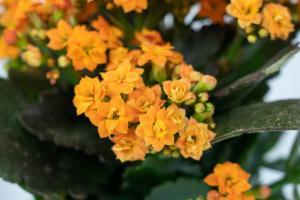How to Trim a Fig Tree House Plant
Ficus trees are popular house plants that can grow quite large if not trimmed regularly. Trimming a fig tree will not only keep its size in check but also promote healthy growth and maintain the plant's shape. In this article, we'll discuss how to trim a fig tree house plant to keep it healthy and beautiful.
Why Trimming is Important
Trimming is essential for fig trees as it helps to remove unwanted growth and maintain the plant's shape. It also encourages new growth and promotes higher fruit yields. Trimming also helps to remove dead or diseased branches, which can harm the entire plant.
When to Trim
The best time to trim a fig tree house plant is in late winter or early spring when the plant is dormant. This is the time when the plant is not actively growing, making it easier to see its structure and make the necessary cuts. Avoid trimming in the fall or early winter as it can result in damage to the plant due to the harsh weather conditions.
Tools to Use
To trim a fig tree, you will need a few basic tools, including pruning shears, loppers, and a hand saw. Ensure that the tools are sharp to prevent any damage to the plant. Sanitize your tools before and after trimming to prevent the spread of disease-causing organisms.
Steps to Trim a Fig Tree House Plant
Step 1: Identify the branches you want to remove. Look for branches that are weak, diseased, or dead. You should also remove any branches that are crossing or rubbing against each other as they can cause damage.
Step 2: Make a clean cut. Use pruning shears to remove small branches and loppers to remove larger ones. Make sure the cut is at a 45-degree angle and clean to prevent any damage to the plant.
Step 3: Trim for shape. Use your hand saw to remove any larger branches that are affecting the overall shape of the plant. When trimming for shape, it's important to make cuts close to a node or bud.
Step 4: Avoid over-trimming. Don't remove more than one-third of the plant's foliage in one session. Over-trimming can lead to a lack of vigor and affect the plant's health.
Step 5: Treat any cuts. Use a pruning sealant to cover any cuts or wounds you make. This will prevent any bacteria or fungi from infecting the plant and promote faster healing.
Step 6: Repeat. Trim your fig tree regularly to keep it healthy and beautiful.
Conclusion
Trimming a fig tree house plant is essential to maintain its health and beauty. It's best to trim in late winter or early spring when the plant is dormant, and you should always use clean, sharp tools to prevent damage. With proper trimming techniques, you can promote healthy growth and ensure that your fig tree remains a stunning addition to your home.

 how many times do yo...
how many times do yo... how many planted tre...
how many planted tre... how many pine trees ...
how many pine trees ... how many pecan trees...
how many pecan trees... how many plants comp...
how many plants comp... how many plants can ...
how many plants can ... how many plants and ...
how many plants and ... how many pepper plan...
how many pepper plan...
































